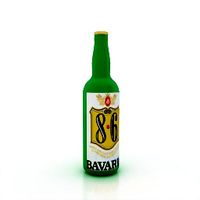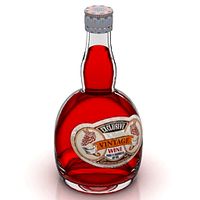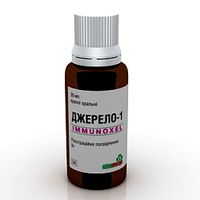Thingiverse

CAPSLock - Beer bottling tool by JanoMyburgh
by Thingiverse
Last crawled date: 3 years, 4 months ago
The CAPSLock tool allows you to:
Reseal any partially consumed beverage bottle with a crimp cap. This is done using the original cap. This can be done at least 2 times before the seal/crimp loses its efficacy. This is done by placing the original cap on the bottle. Placing the CAPSLock over the cap and gently striking it with your palm.
Reuse the existing cap and bottle from any bottle with a crimp cap to bottle a fresh batch of homebrew. This can be done at least 2 times which negates the need to immediately buy consumables (caps) to start brewing. Caps can be used at least 2-3 times before the seal loses/crimp efficacy. This is done exactly like resealing a half-consumed beverage.
Seal any bottle with a crimp cap using a new cap. Perfect if you have purchased few caps for recycled bottles, or new bottles and caps. This is done by placing a new cap on the bottle after filling it with delicious homebrew, placing the CAPSLock over the new cap and then gently but firmly striking the top of the tools with a rubber mallet until the tool lifts off easily. If the tool does not lift off easily, the cap has not been crimped enough. Keep whacking.
Reuse previously unusable twist cap bottles and their caps to bottle homebrew beer. The CAPSLock allows you to easily unscrew stubborn screw-top bottles due to its cap-shaped “Socket & T-handle” design. This T-handle design allows you to apply enough torque to reseal the same bottle again to recycle it for home-brewing which allows a previously unusable NRB resource to be tapped for brewing enjoyment. DO not over-torque these caps when sealing them. It is very easy to strip the cap threads.
The CAPSLock allows the user to open sealed bottles in such a way as to leave the original cap with no damage and as little deformation as possible extending is recyclable lifespan.
The production efficiency and material saving can be extended by utilizing dual-density infill in slicing software. Slicers like CURA allow the user to apply infill in varying densities in specific areas to enhance strength where needed. The entire tool can be printed with 40-50% infill for simple production, or the tool can be printed at much lower (20%) infill for the majority of the tool and only the area that will be subjected to impact can be reinforced with a wedge of 50% infill utilizing the supplied Impact_Wedge.stl file via the “per model” settings in CURA, placing the wedge above the capping section of the tool (see images for placement and example. This step needs to be completed in the slicing software.
The CAPSLock was designed with two internal cavities that will allow for pausing mid-print and inserting a 5mm thick, 8mm diameter Neodymium magnets in the cavity (marked blue in fig.4). This serves two purposes: It allows the tool to be stored on the vertical surface of a refrigerator and it retains the bottle cap when opening a bottle so that the cap can be manually extracted and not dropped on the floor (an annoyingly common occurrence with traditional openers). Cap is extracted by slapping tool on your palm.
Prototypes that have been manufactured in PLA have functioned well mechanically through 200-300 use cycles. Thus, PLA is likely to allow for a reasonable lifecycle, though a more resilient material such as ABS or PETG is likely to be more suited to long term use.
Reseal any partially consumed beverage bottle with a crimp cap. This is done using the original cap. This can be done at least 2 times before the seal/crimp loses its efficacy. This is done by placing the original cap on the bottle. Placing the CAPSLock over the cap and gently striking it with your palm.
Reuse the existing cap and bottle from any bottle with a crimp cap to bottle a fresh batch of homebrew. This can be done at least 2 times which negates the need to immediately buy consumables (caps) to start brewing. Caps can be used at least 2-3 times before the seal loses/crimp efficacy. This is done exactly like resealing a half-consumed beverage.
Seal any bottle with a crimp cap using a new cap. Perfect if you have purchased few caps for recycled bottles, or new bottles and caps. This is done by placing a new cap on the bottle after filling it with delicious homebrew, placing the CAPSLock over the new cap and then gently but firmly striking the top of the tools with a rubber mallet until the tool lifts off easily. If the tool does not lift off easily, the cap has not been crimped enough. Keep whacking.
Reuse previously unusable twist cap bottles and their caps to bottle homebrew beer. The CAPSLock allows you to easily unscrew stubborn screw-top bottles due to its cap-shaped “Socket & T-handle” design. This T-handle design allows you to apply enough torque to reseal the same bottle again to recycle it for home-brewing which allows a previously unusable NRB resource to be tapped for brewing enjoyment. DO not over-torque these caps when sealing them. It is very easy to strip the cap threads.
The CAPSLock allows the user to open sealed bottles in such a way as to leave the original cap with no damage and as little deformation as possible extending is recyclable lifespan.
The production efficiency and material saving can be extended by utilizing dual-density infill in slicing software. Slicers like CURA allow the user to apply infill in varying densities in specific areas to enhance strength where needed. The entire tool can be printed with 40-50% infill for simple production, or the tool can be printed at much lower (20%) infill for the majority of the tool and only the area that will be subjected to impact can be reinforced with a wedge of 50% infill utilizing the supplied Impact_Wedge.stl file via the “per model” settings in CURA, placing the wedge above the capping section of the tool (see images for placement and example. This step needs to be completed in the slicing software.
The CAPSLock was designed with two internal cavities that will allow for pausing mid-print and inserting a 5mm thick, 8mm diameter Neodymium magnets in the cavity (marked blue in fig.4). This serves two purposes: It allows the tool to be stored on the vertical surface of a refrigerator and it retains the bottle cap when opening a bottle so that the cap can be manually extracted and not dropped on the floor (an annoyingly common occurrence with traditional openers). Cap is extracted by slapping tool on your palm.
Prototypes that have been manufactured in PLA have functioned well mechanically through 200-300 use cycles. Thus, PLA is likely to allow for a reasonable lifecycle, though a more resilient material such as ABS or PETG is likely to be more suited to long term use.
Similar models
thingiverse
free

Beer Bottle Caper by Galione1
...100% infill to make it as strong as possible. would advice 0.2 layer height but im sure 0.3 would also would fine.
regards
tomas
grabcad
free

Bottle cap removal tool
...bottle cap removal tool
grabcad
this tool allows someone to break the safety seal and remove the cap from a serum bottle.
thingiverse
free

HomeBrew Airlock for 5L water bottle by Orseeny
.... simply close the cap and fill it with water till halfway. put the airlock cap and watch the bubbles!
happy brewing and printing
grabcad
free

Flower Bottle Cap
... bottle with the original cap and the flower cap can on an other bottle.
flower has no function, but has a decorative function :)
thingiverse
free

Cap Seal for 3D printable bottle by xSnowHeadx
...he cap. the seal published here was tested with the 150mm-bottle shrinked to 90% (the seal for the test was shrinked to 90% too).
thingiverse
free

Bottle opener by Scapenator
...
this tool can help to open easly the caps from the bottles.
for caps with diameter 26 - 35 mm
it is reccomanded a high infill.
grabcad
free

Filter Holder Bottle
...ni.daniel-1 / https://grabcad.com/library/garrafa-coca-cola-1 3d file to boolean difference a new schape from it. thank you both.
thingiverse
free

Water Bottle Cap Wrench by chetjohnston
...bottles for making diy sparkling water, you might find this helpful.
make them in different colors to help organize your bottles!
cg_trader
$7

Jar Bottle
...mp-on cap, press-on cap, plastic shrink, heat-sealed lidding film, an inner seal, a tamper-evident band, or other suitable means.
thingiverse
free

Growler Saver by Ductsoup
...end the life if your growlers. not necessary, but it would probably be appropriate to print this in beer filament if you have it.
Janomyburgh
thingiverse
free

Guitar neck Shaping blocks by JanoMyburgh
...tar has. a friend likes building guitars and asked me to design and print these for him. supposedly these tools are quite pricey.
thingiverse
free

Threaded TR8x8 lock collar by JanoMyburgh
...he collar with tightening knob negates the need to an extra tool during for tension installations and it can double as a jog knob
Capslock
3ddd
free

набор мебели Capslock BRW
...capslock brw
3ddd
brw , capslock
офисная мебель польского производителя "брв"
3ddd
$1

мебель для детской
...brw , capslock за основу была взята коллекция brw capslock но бумажный шпон не удовлетворял практическим потребностям. поэтому на...
thingiverse
free

DCS capslock, offset stem (like steped) by Applet
...k, offset stem (like steped) by applet
thingiverse
keycap made for use with mx-keycaps on boards made for a stepped capslock-key
thingiverse
free

IBM Model M Capslock by thijxx
...ibm model m capslock by thijxx
thingiverse
model found here: https://github.com/jaseg/model-m
not tested
thingiverse
free

Commodore Logo CapsLock key by DigitalMonk
...ront_legend() works just like legend() but puts it on the front face of the key instead of the top).
hope some of you enjoy it!
thingiverse
free

caps lock by GWsmurf
...caps lock by gwsmurf thingiverse capslock ...
3d_sky
free

furniture for children
...children 3dsky was based on the collection of brw capslock but paper veneer did not meet the practical needs....
thingiverse
free

Project Keyboard by BeNsAeI
...not wiggle as i type) code (with error prone capslock: https://pastebin.com/lznfpy1c code (with accurate capslock):...
thingiverse
free

Motion2USB by alex2801
...arduino has a very simple program to send a capslock keystroke when motion is detected. edit: i have updated...
Beer
archibase_planet
free

Beer
...beer
archibase planet
mug beer
beer n010408 - 3d model (*.gsm+*.3ds) for interior 3d visualization.
archibase_planet
free

Beer
...beer
archibase planet
ale beer spirits
beer - 3d model (*.gsm+*.3ds) for interior 3d visualization.
3d_export
$5

beer
...beer
3dexport
gosser austrias finest beer since 1860
3d_export
$5

Beer mug
...beer mug
3dexport
beer mug,foamy beer
3d_ocean
$5

Glas of Beer
...rinking drinks foam food glas glas of beer guinness party
a photorealistic glas of dark beer with foam, foam residue and bubbles.
archibase_planet
free

Beer
...beer
archibase planet
beer ale strong drinks
bavaria - 3d model (*.gsm+*.3ds) for interior 3d visualization.
archibase_planet
free

Beer
...beer
archibase planet
bottle beer strong drink
staropramen - 3d model (*.gsm+*.3ds) for interior 3d visualization.
3d_ocean
$7

Beer Mug
...g brewery cover drink jug mug munich beer festival oktoberfest party paulaner stein stone
a nice german beer mug with metal cover
3d_export
$7

beer mug
...beer mug
3dexport
beer mug
3d_export
$5

beer box
...beer box
3dexport
beer box
Bottling
3d_ocean
$2

Bottle
...bottle
3docean
bottle glass bottle
so realistic glass bottle
archibase_planet
free

Bottle
...bottle
archibase planet
bottle litre bottle glass-ware
bottle - 3d model for interior 3d visualization.
archibase_planet
free

Bottle
...bottle
archibase planet
bottle glass bottle flask
bottle - 3d model (*.gsm+*.3ds) for interior 3d visualization.
3d_export
$5

bottles
...bottles
3dexport
bottles
archibase_planet
free

Bottle
...bottle
archibase planet
bottle wine bottle of wine
bottle n121211 - 3d model (*.gsm+*.3ds) for interior 3d visualization.
archibase_planet
free

Bottle
...bottle
archibase planet
bottle bottles kitchen ware
bottle n120213 - 3d model (*.gsm+*.3ds) for interior 3d visualization.
archibase_planet
free

Bottle
...bottle
archibase planet
small bottle bottle vial phial
bottle n060411 - 3d model (*.3ds) for interior 3d visualization.
3d_export
$5

bottle
...bottle
3dexport
bottle with liquid.
archibase_planet
free

Bottle
...bottle
archibase planet
bottle glass
bottle - 3d model for interior 3d visualization.
archibase_planet
free

Bottle
...ibase planet
bottle bottle of port alcohol
bottle of crimean port n090211 - 3d model (*.gsm+*.3ds) for interior 3d visualization.
Tool
turbosquid
$21

Tool box with tools
... available on turbo squid, the world's leading provider of digital 3d models for visualization, films, television, and games.
archibase_planet
free

Tools
...tools
archibase planet
tools instruments implements
tools n070114 - 3d model (*.gsm+*.3ds+*.max) for interior 3d visualization.
3d_ocean
$12

Tools
...tools
3docean
hammer metal old screw tools wrench
maya
turbosquid
$6

Tool Cart / Tool Box
...
royalty free 3d model tool cart / tool box for download as on turbosquid: 3d models for games, architecture, videos. (1241859)
3d_ocean
$15

crimp tool
... tool copper cutter crimp crimp tool electrical electrical tools press tools pressing tool tools wire cutter
created in maya 2013
3d_ocean
$5

Tools
...tools
3docean
3d models paint tools work
3d,models,works,paint,art,create,working,
3d_export
free

tools
...tools
3dexport
coldsteel
turbosquid
$15

Tools
...turbosquid
royalty free 3d model tools for download as blend on turbosquid: 3d models for games, architecture, videos. (1331352)
3ddd
$1

bar tool
...bar tool
3ddd
барный
bar tool
turbosquid
$35

tools
... available on turbo squid, the world's leading provider of digital 3d models for visualization, films, television, and games.
